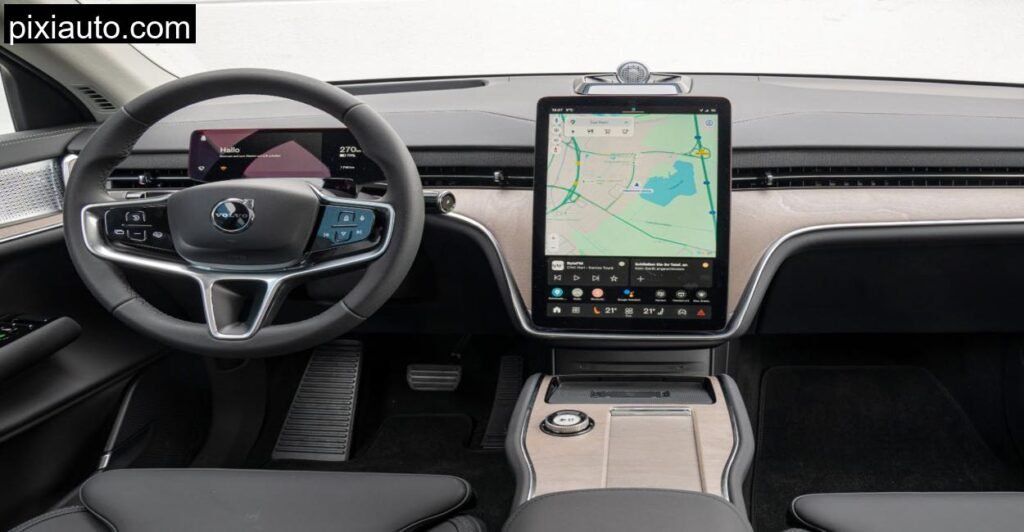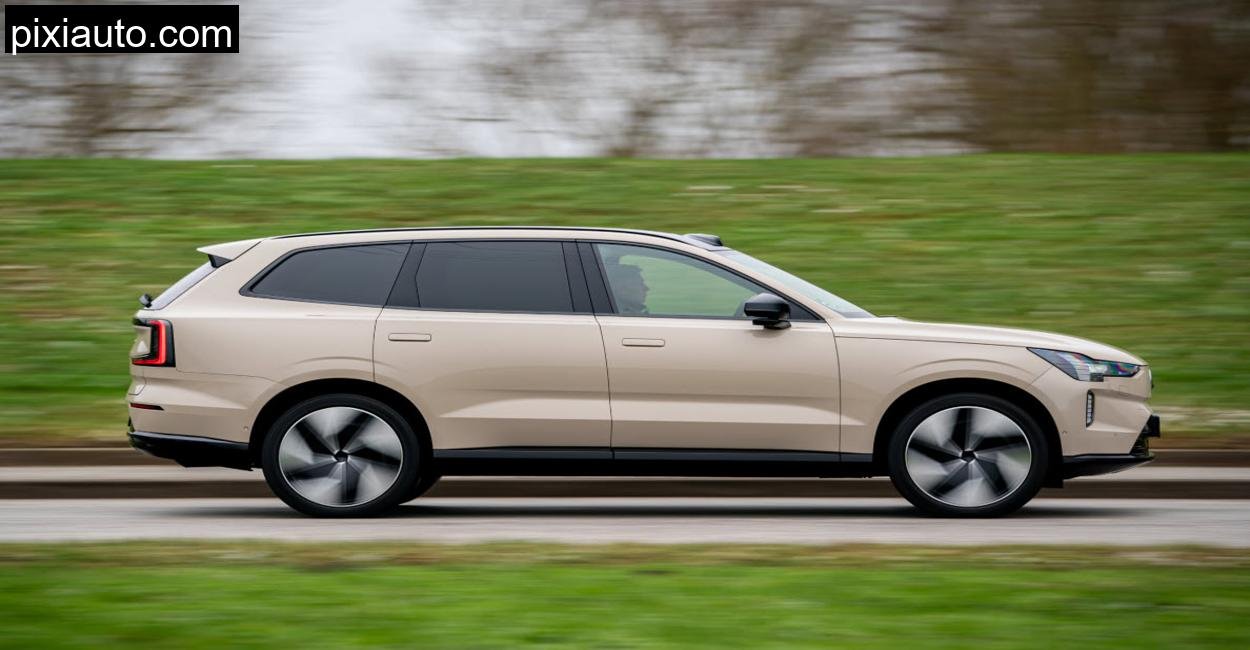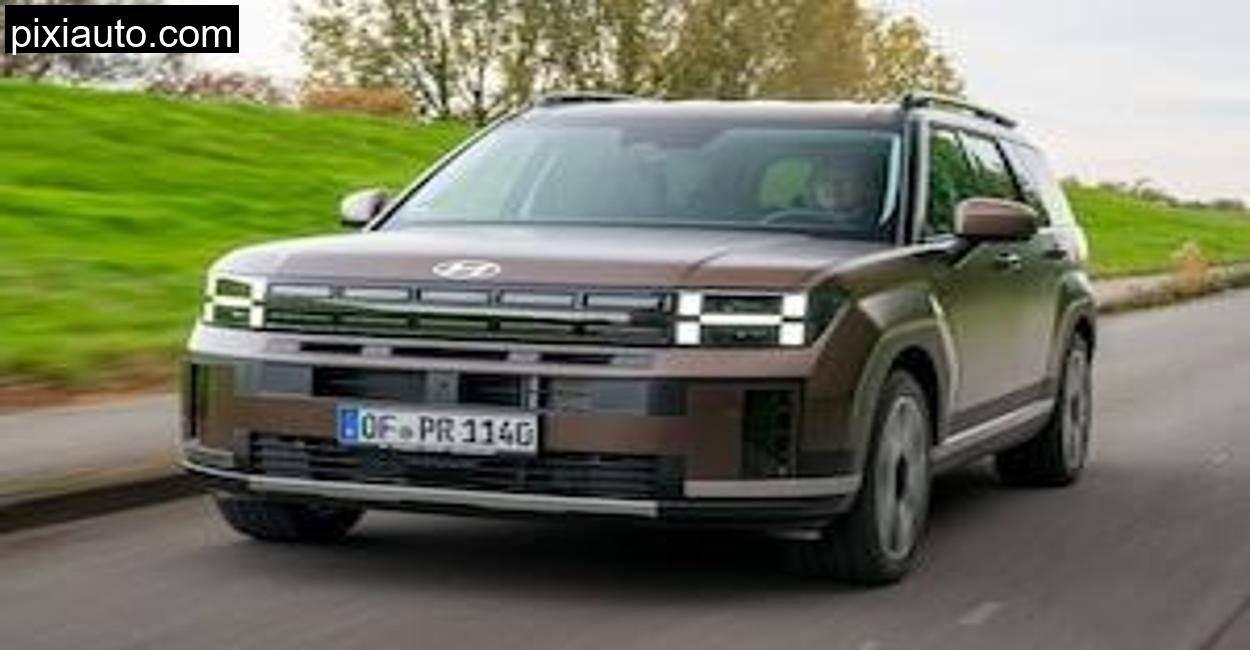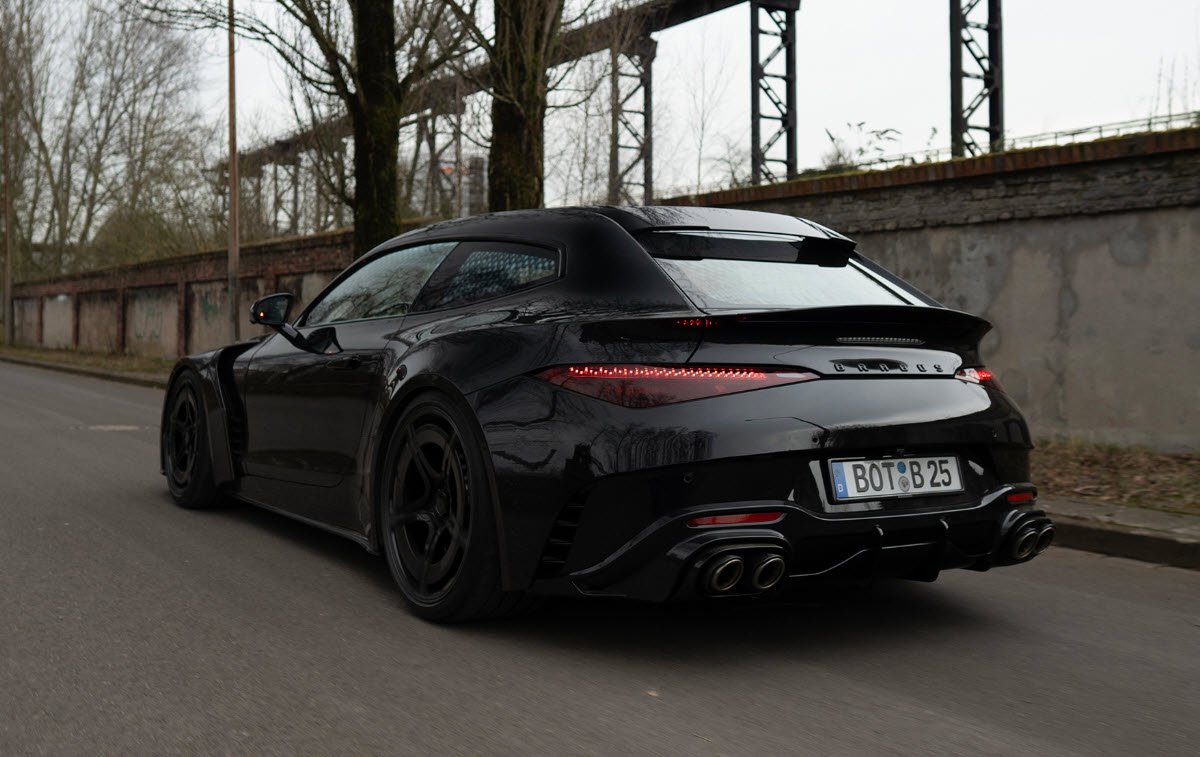The morning mist hung low over the oak, lined ridges of the Virngrund hills, the trees dense and still wet from last night’s rain. The road wound through the forest like a lazy ribbon, damp and gleaming. It was here, in this quiet part of Baden, Württemberg, that I decided to take the new Volvo EX90 Twin Motor Performance AWD for a full test drive , not just numbers and data, but to see how this electric luxury SUV behaved when asked to move more than its near, three, ton weight and digital glitz.
It had just rained, the forest smelled earthy and clean, and the birds were louder than usual. In the middle of that raw, natural calm, the EX90 looked like a spaceship that had landed to study us. Sharp, edged, cleanly sculpted, five meters long and imposing in white, it doesn’t just stand out, it announces itself.
A Cabin That Feels Like Scandinavian Design Brought to Life

Sliding into the EX90 isn’t something you do casually. The sill is high, and for anyone not long, legged, you feel like you’re climbing into a lounge that’s been lifted on stilts. Once seated, however, it feels immediately like Volvo , minimal, warm, protective. But everything is now filtered through screens. No buttons, no dials, just soft materials, ambient lighting, and a huge 14.5, inch portrait touchscreen that dominates the dashboard like an altar.
There’s no engine noise. Just the gentle whoosh of the air suspension adjusting and the soft hum of climate control. I noticed the seats , not real leather, but a convincingly plush textile material. Comfortable and supportive, yes, but a reminder that this SUV is trying to walk the line between luxury and ethical sustainability.
Even before starting the drive, I had to get used to navigating the entire car’s ecosystem through the touchscreen. Want to adjust the side mirrors? Touchscreen. Open the glove box? Touchscreen. Change airflow direction? You guessed it , touchscreen. It feels futuristic but also, at times, like you’re begging the car to listen. That’s where things stumble. The Google, based system is fine for navigation and asking trivia, but say “Open the passenger window” and it simply ignores you. Too digital, not enough tactile.
The Numbers Speak: A Beast Beneath the Calm
Let’s talk numbers, because the EX90 comes with some serious electric firepower. Underneath its serene shell are two electric motors, one at each axle, delivering 517 horsepower and 910 Nm of torque. That’s more than most sports sedans. And when I floored it out of a clearing near Virngrund’s thickest forest line, it launched. Not just moved, launched.
The instant surge of torque flattens you into the seat. 0 to 100 km/h? 4.9 seconds. That would be impressive in a hot hatch. In something that weighs 2.8 tonnes? It’s bordering on absurd. But even as the forest blurred past and the numbers climbed fast, there was no drama. No wheel spin. No noise. Just silent, controlled acceleration , a gentle push rather than a violent shove.
And then I lifted. The regen braking kicked in smoothly, especially when auto, recuperation was enabled using GPS and sensor inputs. When disabled, the EX90 coasted with less drag, but honestly, I preferred the car doing the thinking for me.
Highway, Hills, and Handling: It’s Not Built to Dance

Once I hit the faster Bundesstraße slicing through Virngrund’s outskirts, the EX90 settled into cruise mode. Here’s where it felt most at home. The adaptive air suspension absorbed every bump, every undulation, with a calm dignity. You don’t feel the mass, and that’s Volvo’s genius. But the moment I asked the SUV to lean into a curve with pace , especially on the downhill slopes near Jagstzell , its weight revealed itself. There’s no hiding 2.8 tons.
It leans. It understeers. The front pushes wide, and the tires whisper, “Please no.” The steering, although pleasant and responsive, never changes feel, no matter what drive mode you select. There’s a setting in the infotainment to “enhance” steering feel , but it changes absolutely nothing.
Still, for a luxury cruiser, not a performance SUV, that’s forgivable. Where it wins big is ride comfort. On the cobbled village roads or winding country tarmac, passengers were protected from the outside world. The EX90 cocoons its occupants , silent, smooth, unbothered.
Charging and Consumption: Expectations vs Reality

Now comes the part where numbers start to bite. Volvo claims 570 kilometers of WLTP range. I didn’t even get close. My average consumption during mixed driving , forest roads, short autobahn stints, and village crawling , was a sobering 35.5 kWh/100 km. That gave me around 345 kilometers on a full charge.
On the A7 north, cruising at 130 km/h, that figure spiked to 42 kWh. Range anxiety crept in quicker than expected. Thankfully, the built, in Google Maps integration helps , it suggests fast, charging spots along the route based on your battery level and destination, minimizing stress. But the reality is this: if you’re planning a long journey, frequent stops are unavoidable.
When plugged into a 250 kW DC fast charger, it took just about 30 minutes to charge from 10% to 80%. That’s decent. But at home with the 11 kW wallbox, the story changes. Overnight charging took over 10 hours. And with no 22 kW onboard charger offered, that felt like a surprising omission for a car in this price segment.
The Practical Side: Hauling, Towing, and Everyday Luxury
For families and people like me who carry everything from bikes to camping gear, the EX90 delivers. Seven seats are standard. The boot space ranges from 697 to 2135 liters depending on configuration. And it tows up to 2200 kg , not bad for an EV.
During the test, I folded the rear seats and fit two full, sized mountain bikes with wheels on. That wasn’t possible in many midsize SUVs I’ve driven this year. The rear bench, if the third row is folded down, feels like first class. My co, driver napped in the back while I tackled Virngrund’s bends.
The seating position is commanding, visibility excellent, and the cabin feels thoughtfully built. The sound system is immersive. Road and wind noise is minimal even at highway speeds. It feels expensive. And it should , the price starts at €96,800, and my test car, loaded with extras, crept into six, figure territory.
Technical Specifications
To maintain reliability, we reference only Volvo’s official online resources for technical specifications.
| Specification | Detail |
| Powertrain | Dual synchronous electric motors (F/R) |
| Continuous Power | 252 kW (343 hp) |
| Combined System Power | 380 kW (517 hp) |
| Maximum Torque | 910 Nm |
| Drive Type / Transmission | AWD / Single, speed |
| 0, 100 km/h | 4.9 seconds |
| Top Speed | 180 km/h |
| Battery Capacity | 107 kWh |
| Consumption (Test) | 35.5 kWh/100 km |
| Real, world Range | ~345 km |
| Charging Time (10, 80%) | 30 minutes (250 kW DC) |
| Charging (Home, 11 kW) | ~10 hours |
| Length / Width / Height | 5037 / 1964, 2113* / 1744 mm |
| Wheelbase | 2985 mm |
| Weight | 2779 kg |
| Boot Space | 697, 2135 liters |
| Towing Capacity | 2200 kg |
| Seating | 7 (standard) |
| Base Price | from €96,800 |
| *Width with mirrors |
Conclusion: Electric Powerhouse, But Not Without Flaws
The Volvo EX90 feels like a true next, generation SUV , clean, quiet, powerful, and wrapped in a digital future. It’s a symbol of what Volvo thinks modern luxury should be: minimalistic, ethical, and confident. It nails comfort, safety, space, and speed. In the day, to, day, in towns and countryside alike, it glides.
But it’s not perfect. The touchscreen, centric control layout can be frustrating. The real, world range falls short of its claims. Charging at home is slow, and the lack of a 22 kW option feels like a miss. And for all its power, it’s no athlete on twisty roads.
Still, if you want a seven, seat electric SUV that can swallow bikes, kids, and gear while making your highway journey feel like a business, class flight , this is it. Volvo has made a bold, beautiful, and occasionally flawed statement.
Is the EX90 worth the price tag?
It depends on your priorities. If comfort, design, and space matter more than range or dynamic agility, it justifies the cost , barely.
Can EX90 tow heavy loads like a traditional SUV?
Yes. Up to 2200 kg. For an EV, that’s strong, and it performs confidently even when towing.
How long does EX90 take to charge at home?
On an 11 kW wallbox, it takes around 10 hours. There’s no 22 kW charger option.




Leave a Comment